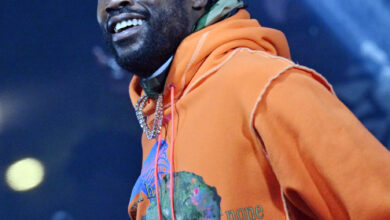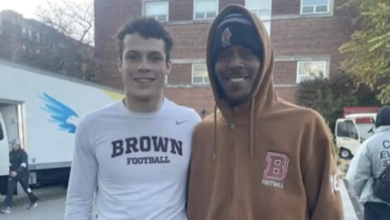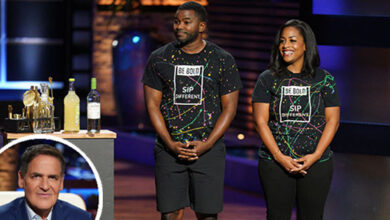From shunned to celebrated: Hip-hop’s journey into the mainstream

By Megan Sayles
AFRO Business Writer
msayles@afro.com
In 2017, a Nielsen report confirmed that hip-hop had become the most popular genre of music in the U.S., unseating rock for the first time. Today, it’s still reigning supreme across the world, with Spotify announcing that, globally, a quarter of all streams in 2023 were hip-hop music. The genre garnered more than 400 million listeners this year.
Its abundance of admirers has translated into an $8 billion-business as estimated by Forbes. Many believe hip-hop’s success has been due to the fact that it’s not just a genre but a culture that’s pervaded all aspects of society.

“It’s outflanked rock and roll and all the other musical genres for the last six or seven years. Within that, hip-hop extends to everything,” said C. Keith Harrison, founding director of University of Central Florida’s Business of Hip-Hop Innovation and Creative Industries Certificate. “It’s become the cultural air we breathe from fashion, to sports, to higher education curriculum.”
Hip-hop was born in the South Bronx in New York City during the 1970s. It wasn’t just rap, it included deejaying, b-boying and graffiti painting. Jamaican-American Clive Campbell, better known as DJ Kool Herc became hip-hop’s founding father when he introduced the breakbeat dj technique at a house party in 1973.
However, it was not always celebrated as it is today. In its early years, mainstream (i.e., White) society denounced the genre, criticizing it for themes they viewed as violent, inappropriate and offensive.
“I remember a time in hip-hop where it was just taboo. Hip-hop artists were fighting to get into doors, and they were only allowed in certain venues,” said Jasmine Young, director for the Howard University School of Business Warner Music/Blavatnik Center for Music and Entertainment Business. “Watching the journey of hip-hop into the mainstream has been tremendous to be a part of, but it’s bittersweet. As it gets into the mainstream even more, we have to protect the culture.”
While there are various answers to who brought hip-hop into the mainstream, Young thinks it was Run DMC, as she, like the prolific hip-hop group, grew up in Queens, New York. Others may attribute the achievement to the Sugarhill Gang, L.L. Cool J or Public Enemy.
“Hip-hop is finally getting its just due, and hip-hop artists are able to sell anything globally and worldwide.”
Before coming to teach at Howard University, Young spent much of her career in hip-hop marketing. She started her journey at Def Jam Records, founded by music moguls Russell Simmons and Rick Rubin, and worked alongside artists, like Jay-Z, Slick Rick and Foxy Brown.

“America right now is a prime time for hip-hop artists,” said Young. “Hip-hop is finally getting its just due, and hip-hop artists are able to sell anything globally and worldwide.”
Hip-hop’s selling superpower is not just reserved for new hits. More and more companies are harnessing its global reach to promote their products.
It started with the drop of Run DMC’s “My Adidas” in 1986, which promoted the brand’s Superstar sneakers. Now hip-hop’s influence is seen from high fashion, with Dior and Travis Scott, to fast-food menus, with Saweetie and McDonald’s.
Harrison said you can’t watch 10 commercials consecutively without seeing a brand leverage hip-hop to market itself.
“There’s no major corporation, outside of a few exceptions, that doesn’t utilize hip-hop language, hip-hop images or hip-hop artists in its marketing,” said Harrison. “You really do not have a cutting-edge marketing plan if hip-hop is not being acknowledged in some aspect. People utilize hip-hoppers as influencers.”
Hip-hop has also been recognized for its intersection with innovation and entrepreneurship. Early on, many of the genre’s artists, like the late Nipsey Hussle, sold mixtapes and CDs out of the trunk of their cars.
Today’s hip-hop businesses come in the form of Drake’s OVO fashion brand, Jay-Z’s entertainment company, Roc Nation, and Snoop Dogg’s venture fund, Casa Verde Capital.
“Hip-hop artists are in Silicon Valley, the food and beverage space and clothing, they’re leveraging their for whatever they want,” said Harrison. “‘Can’t stop, won’t stop’ has been the mantra of our era with hip-hop.”
Megan Sayles is a Report For America Corps Member.





